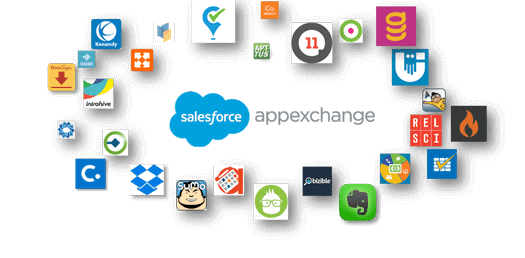Nov. 10, 2022 · 5 minutes
The most popular marketplace for business apps is called AppExchange. AppExchange apps extend Salesforce to every department and sector and are customized for Salesforce. It's a tried-and-true ecosystem of apps with millions of downloads and countless user reviews to assist you in finding the ideal fit for your company. Moreover, AppExchange offers more than just business software. Additionally, you can locate parts, consulting companies, and developers to assist you in enhancing Salesforce's functionality and managing your organization through apps.

Here are the first five steps for using AppExchange.
Verify the prerequisites and test the app listing's functioning before deploying an AppExchange app into your production instance of Salesforce. It is advised that you follow these instructions before installing any of the above apps in your production organization.
You can choose to make the app visible to all users, just admins, or some users during the installation process. You can later make the app accessible to other profiles if you restrict access to admins only. The number of apps is unrestricted, but there are limits on the number of custom tabs and objects.
Test drives and demos on the AppExchange are accessible to everyone. AppExchange apps can be installed by Salesforce administrators and users with the "Download AppExchange packages" capability.
They provide Private AppExchange on AppExchange, which enables you to share apps inside of a single org. In addition, we provide AppExchange Store Builder, which enables you to create your own app store and distribute apps to partners, clients, and staff members across several organizations.
You can find the top apps using a variety of tools. More than 50,000 evaluations on AppExchange can direct you to applications that your peers have found to be successful. A wonderful resource for making connections with colleagues is the Success Community's All About AppExchange Apps group. Visit our material collection for guidance broken down by department, industry, and business size.
Are AppExchange apps secure?
To guarantee that programs adhere to a set of security standards and best practices, all AppExchange applications undergo a qualitative and quantitative evaluation process. Depending on the platform architecture and other variables, each application will have different specific requirements. Keep reading.
Any app that wants to be publicly listed on AppExchange must undergo a security evaluation. Any custom applications, tabs, and objects a managed package utilizes won't count against the corresponding restrictions in a customer's organization if it passes the review. Additionally, a managed package that passes the evaluation won't count against a customer's organization's contractual license restrictions. There are still additional restrictions in place, such those on the quantity of custom fields that can be added to an object. Whether or not the package passes the security evaluation, any resources it requires will count against the relevant restrictions in a customer's organization if it is unmanaged.
Customizable, responsive building elements for creating apps and pages are called Lightning Components. You can reuse components in other apps and sites because they already have all the code necessary to function. Start out your app development process with a pre-built collection of components from Salesforce, create your own custom components for specialized needs, or choose from a wide selection of components created by Salesforce partners that are available on AppExchange.
Become a subscriber to AppExchange communications to receive weekly and monthly emails highlighting new and free apps as well as advice on how to expand Salesforce to every department using best practices from the AppExchange.
Packages, which are containers for apps, tabs, and objects, are how AppExchange solutions are installed in your organization. Managed and unmanaged packages are available. Which package type the solution vendor chooses to utilize for distribution determines how the solution will operate in your organization. Let's go over the key distinctions between the various package types.
| Attribute | Managed Packages | Unmanaged Packages |
|---|---|---|
Customization | The solution's metadata and source code cannot be viewed or modified. | Code and metadata can be altered as needed. |
Upgrades | The solution can be automatically upgraded by the provider. | You must uninstall the package from your organization in order to receive an upgrade, and then reinstall a new version from the AppExchange. |
Org limits | The package's contents are exempt from your organization's app, tab, and object limits. | The package's contents count against your organization's app, tab, and object restrictions. |
Look for an unmanaged package if you want to explore a solution's inner workings. In any other case, a managed package is probably more appropriate for your requirements because you may install it without worrying about how it would impact your organization's app, tab, and object restrictions. Upgrades are also painless. After going over the variations across package kinds, let's consider how to approach the installation procedure.